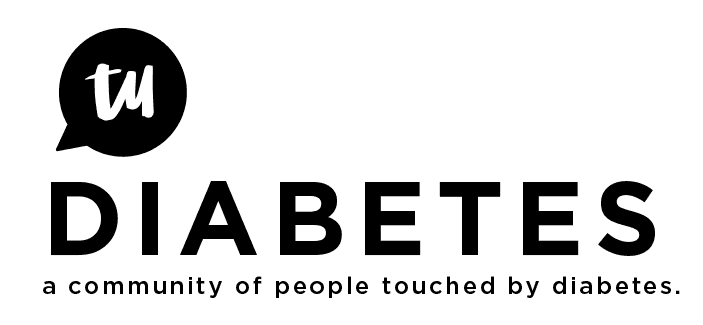I love the Vibe, too. Animas did a better job designing and marketing the pump before J&J bought the company. Let’s hope a better company buys it and carries the technology forward.
To be clear, JnJ hasn’t made any decisions. Tandem has not announced anything publicly. Not to mention Roche’s stupid decision to stop selling pumps in the US, even though they aren’t closing the door to bring future innovations to market here. WTF?! While nothing is 100% on anything yet, sadly,it appears that’s where we are heading. I’ve covered this specifically on DiabetesMine. Hopefully, someone like Google comes along and invests in this tech in order to save it, and not allow it to disappear or get gobbled up by Medtronic where it will never be seen again.
From what I heard, J&J is looking for a buyer, but they are NOT just dumping it. They are waiting to see if they can get what they think it is worth. In the meantime, they are still supporting it and selling it.
Agree 100% with you on that! One big fish makes the pond suck. Lots of little fish are much better…
We should start a private equity fund and then crowdfund it.
Does anybody know why Tandem is not offering their pumps in Europe? I guess that they would own half of the within the first three years. And funding is not a problem either as most countries’ social security is covering the pumps + consumables.
Most likely because they are a small company and the cost of setting up would be high. Although the total numbers with T1D (potential customers) is probably twice the number in the US, they are spread over 30 countries and pump provision is typically lower than in the US… Drug approvals (and I assume approvals for tech) are centralized but each country has it’s own health care system ranging from compulsory insurance to a full free-at-the-point-of-provision health service. They would have to negotiate separate deals for each country.
Government health-providers or insurance providers are effectively monopoly customers, so drive a hard bargain in terms of price (In the UK, the NHS negotiated deals work out at around £2800 for a pump with a 4-year warranty - equivalent to around $3400). Unlike say CGM, pump provision requires significant support in terms of training etc., which means they wouldn’t be able to run the whole thing from one office in say Amsterdam and send out trainers to Greece or Finland.
I suspect Tandem aren’t big enough to invest in the infrastructure in a market dominated by Medtronic, Animas and Roche.
Regulators are the same everywhere, but I’ll put the American FDA up against anyone. I could fill an entire page with examples, but here’s just one.
My friend is spending the year in Europe. Rather than ship his powered wheelchair over with him, he bought a new one there. He can’t stop gushing about how much better it is. Longer battery life, easier to control, better looking, and features he’s never seen anywhere else, e.g., climbing curbs and holding doors open. He’s totally in love with the thing.
He asked the manufacturer why they don’t export it to the States. The answer was, “too many regulatory hoops to jump through. It’s not worth our while.”
And the amazing double edge of this sword is that jumping through those hoops is only worthwhile to someone who is trying to sell something that nobody would actually want to buy unless it was the only option…
A piece of advice… don’t ever fall off a ship that has an “approved” fast rescue boat… because the only motors that ever sought approval for them were mariner outboards (arguably the worst ever made) so you can find them only in 2 places in the world now really… in junk yards, and on “approved” life saving fast rescue boats… and I’d bet dollars to donuts they won’t start when needed. Want to be rescued by a boat with a Honda or a Yamaha outboard that actually works?–Well better call someone who actually had a choice what motor to buy instead…
Is that an allegory because you fell off your ship today? Maybe it’s a metaphor. I wish there was someone here who could explain the difference to me.
Well, I think we need to be cautious about taking this stuff at face value from someone with a ship on his shoulder. 
Actually, regulation of equipment/tech (non-drug) items is pretty straightforward in EU/EAA countries. Unlike with the FDA, new pump models go straight onto the market (which is why they tend to appear in Europe sometimes years before the are approved in the USA and probably why your friends wheelchair doesn’t need to go through a long approval process).
However, getting “safety” approval doesn’t’ mean marketing is straightforward. Pump manufacturers need to negotiate prices etc with 30-odd different purchasing authorities and set up distribution and support networks. One way to do this is to use a local distributor (e.g. Insulet does this), but that reduces profit. There are several pumps that are approved in the UK (e.g. Dana) but which almost nobody uses because the NHS will not fund them.
Also, you can’t forget that in some southern European countries it can take 2-3 years from the invoice date to collect your payment from the government. I wish I could take that long to pay my bills. sigh.
That’s bad, all right. But . . .
Our ambulance service, which was self-sufficient, is now subsidized by the city general fund to the tune of several hundred thousand dollars a year. Why? Because for the past couple of decades, Medicare has steadily reduced the percentage of the agreed-upon fee they will reimburse. It’s now below fifty cents on the dollar.
Getting paid late definitely sucks, but it’s better than not getting paid at all.
